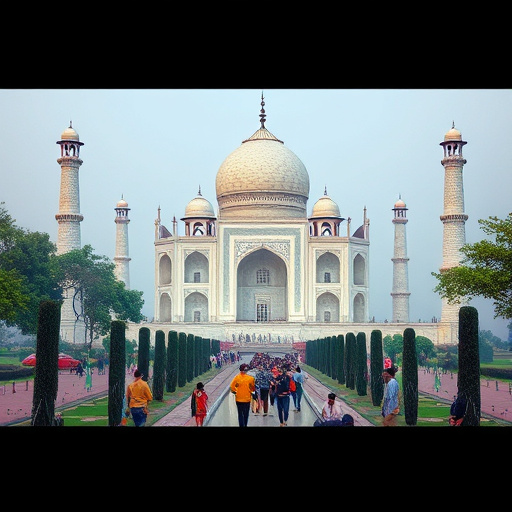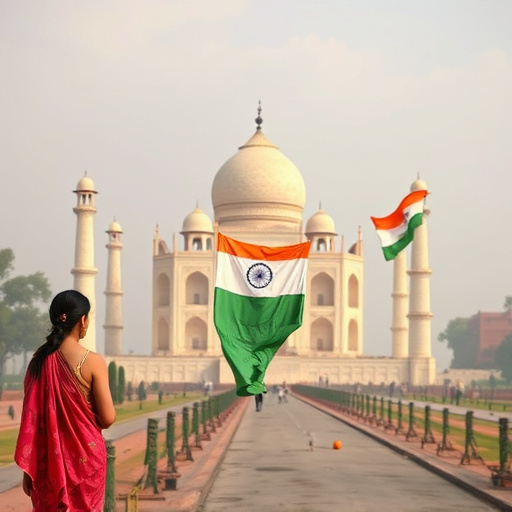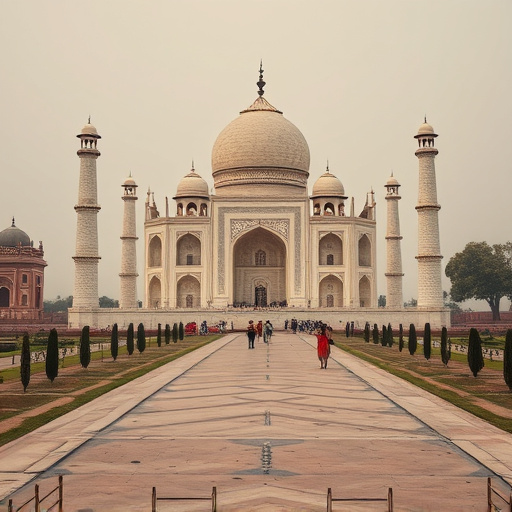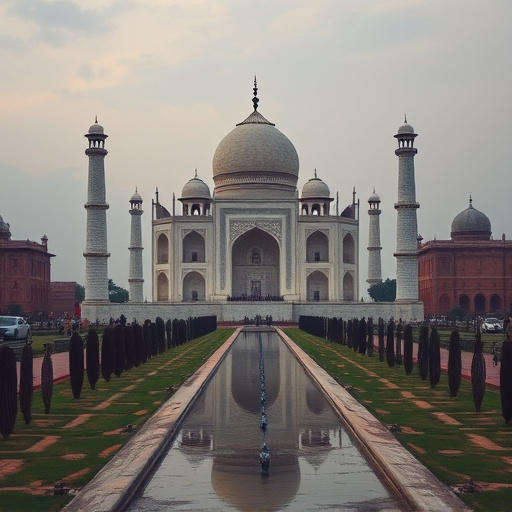Optimal safari times in Jim Corbett National Park, India, vary by wildlife interest and season: dry seasons (Nov-Feb) for peak activity; October-November for migratory birds; monsoon (July-Sept) for lush landscapes but challenging spotting; spring (Mar-Jun) offers balance. Plan trips considering weather, road conditions, and booking advance accommodations for best experiences amidst India's remarkable natural heritage.
Jim Corbett National Park, a haven for wildlife enthusiasts in India, offers an unparalleled safari experience year-round. However, timing is key to maximize your chances of spotting elusive species. This article guides you through optimal weather conditions, best times for wildlife sightings, and seasonal variations in park activity. With practical planning tips and top considerations for choosing the perfect safari time, discover when to embark on your unforgettable journey through India’s rich natural heritage.
- Optimal Weather Conditions for Safari
- Best Times of Year for Wildlife Sightings
- Seasonal Variations in Park Activity
- Planning Tips for Your Visit
- Top Considerations for Choosing a Safari Time
Optimal Weather Conditions for Safari

The best time for a safari in Jim Corbett National Park, India, coincides with the cooler months between November and February when the weather is pleasant and optimal for wildlife spotting. During this period, the park experiences mild temperatures, making it comfortable to explore the lush landscapes and dense forests. The dry season also ensures that water bodies are at their lowest levels, allowing easy access to habitats usually obscured by high waters. This time frame offers adventurers a unique opportunity to witness the annual migration patterns of various species as they move between territories in search of fresh grazing grounds and water sources.
Additionally, the cooler climate encourages animals to become more active during the day, increasing chances of spotting elusive creatures like tigers, elephants, and deer. On a safari, you can do so while enjoying clear, unobstructed views that are often obscured by the dense vegetation during monsoon seasons. Whether on foot or in a jeep, visitors can immerse themselves in the rich biodiversity of Corbett National Park, making it an ideal time for those planning their trip to India with a love for wildlife conservation and adventure. Visit us at any time to experience this breathtaking natural spectacle.
Best Times of Year for Wildlife Sightings

The best time for a safari in Jim Corbett National Park, India, depends on your primary wildlife sighting interest. The dry seasons, from November to February, are considered peak tourism months as many species become more active and visible. During this period, animals gather around water sources, making it easier to spot them. If you’re eager to catch a glimpse of the elusive Bengal tiger, this is an ideal time as they come out in open areas more frequently.
For bird enthusiasts, the winter months before the monsoon (around October to November) offer a unique opportunity to observe various migratory birds as they temple the park for shelter and food. Conversely, the monsoon season (from July to September) brings lush greenery but may make wildlife sightings less predictable due to wet conditions. Give us a call at attractions to learn more about planning your safari around these optimal periods for unforgettable wildlife experiences in Jim Corbett National Park.
Seasonal Variations in Park Activity

Jim Corbett National Park, located in India, experiences distinct seasonal variations that influence wildlife activity and overall visitor experience. The best time for a safari depends on what you hope to witness. Monsoons (July-September) bring lush greenery but can make roads inaccessible; however, it’s an ideal time for bird watching as migratory species arrive. Winter (November-February) offers clear skies and cooler temperatures, perfect for spotting elusive wildlife like the Bengal tiger. During these months, non-vegetarians best enjoy the park’s diverse flora and fauna, with less rain disrupting game viewing.
Spring (March-June) is another popular season as animals become more active after the monsoons. This period offers a balance between weather conditions, making it suitable for all types of visitors. How to maximize your safari experience? Visit us at any time during these seasons to witness unique wildlife interactions and enjoy India’s rich natural heritage.
Planning Tips for Your Visit

Planning your safari adventure in Jim Corbett National Park, one of India’s best-loved wildlife sanctuaries, requires some strategic thinking. The best time to visit depends on what you hope to experience. Monsoon (June-September) brings lush greenery and a vibrant ecosystem but can make spotting animals more challenging due to dense foliage. Conversely, winter (November-February) offers clearer visibility and is considered peak season, ensuring optimal wildlife viewing opportunities.
Consider your preferences when scheduling your trip. If you’re flexible, aim for the shoulder seasons (October-November or March-May), when the park is less crowded and animal activity can be just as exciting. Keep in mind that weather patterns might vary annually, so check local forecasts before your visit us at any time. Additionally, remember to book accommodations in advance, especially during peak vaccinations in India, to ensure a smooth and memorable safari experience.
Top Considerations for Choosing a Safari Time

When planning a safari in Jim Corbett National Park, India, understanding the best time to visit is crucial for an optimal experience. The park offers unique wildlife viewing opportunities throughout the year, but seasonal variations play a significant role in determining animal behavior and accessibility. For instance, the monsoon season (June to September) brings lush greenery but may also make tracking animals more challenging due to dense foliage. On the other hand, the winter months (November to February) are considered peak season as many species become more active, and the landscape is drier, making sightings easier.
Top considerations for choosing a safari time in Jim Corbett include local knowledge and expert guidance, which can be invaluable for navigating the park’s diverse ecosystems. For those seeking the most extensive variety of wildlife, consider booking your safari during the transition seasons (October and March). Additionally, keeping in mind that large groups may affect the overall experience, planning visits during quieter periods can offer a more personalized encounter with nature. Give us a call at around this time to ensure an unforgettable safari tailored to your preferences.
Jim Corbett National Park offers a year-round safari experience, but the best time to visit depends on your preferences. Optimum weather conditions and abundant wildlife sightings are generally enjoyed during the winter months (November to February). However, if you’re seeking fewer crowds, the monsoon season (July to September) can be ideal, despite occasional park closures. With careful planning, a safari in Corbett National Park can be a transformative experience at any time of year. Remember to consider seasonal variations and choose the time that aligns best with your interests for a truly memorable journey through India’s rich biodiversity.
